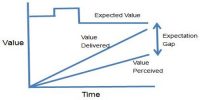True and Fair View in Auditing
True and fair view in auditing means that the financial statements are free from material misstatements and faithfully represent the financial performance and position of the entity. Although the expression of true and fair view is not strictly defined in the accounting literature, we may derive the following general conclusions as to its meaning:
True suggests that the financial statements are factually correct and have been prepared according to applicable reporting framework such as the IFRS and they do not contain any material misstatements that may mislead the users. Misstatements may result from material errors or omissions of transactions and balances in the financial statements.
Fair implies that the financial statements present the information faithfully without any element of bias and they reflect the economic substance of transactions rather than just their legal form.
(a) Going concern: The Conceptual Framework notes that financial statements are normally prepared assuming the entity is a going concern and will continue in operation for the foreseeable future.
(b) Accrual basis of accounting: It requires that an entity prepare its financial statements, except for cash flow information, using the accrual basis of accounting.
(c) The consistency of presentation: The presentation and classification of items in the financial statements shall be retained from one period to the neat unless a change is justified either by a change in circumstances or a requirement of a new IFRS.
(d) Materiality and aggregation: Each material class of similar items must be presented separately in the financial statements. Dissimilar items may be aggregated olds if they are individually immaterial.
(e) Offsetting: Assets and liabilities, and income and expenses, may not be offset unless required or permitted by an IFRS.
(f) Comparative information: It requires that comparative information is disclosed in respect of the previous period for all amounts reported in the financial statements, both on the face of the financial statements and in the notes unless another Standard requires otherwise.














